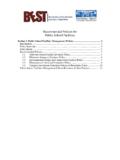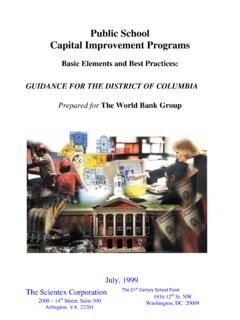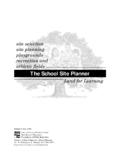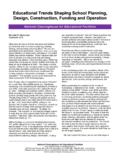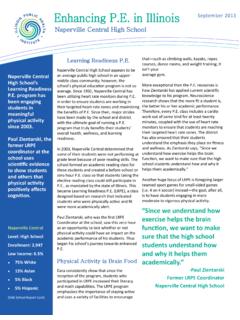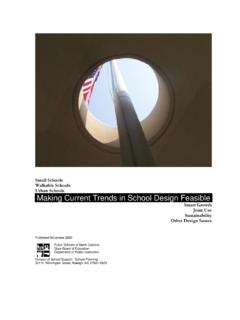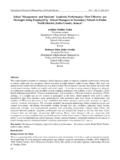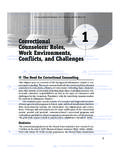Transcription of Recommended Policies for Public School Facilities
1 Recommended Policies for Public School Facilities Section 4: Public School Facilities Funding Policies .. 2 2 Policy Rationale .. 4 Policy Intent .. 5 Recommended Policies .. 5 Long-Term Funding Sources Policy .. 5 Scope and Form of Funding Relationship between State and Local School District Policy .. 7 Funding Allocation for School Building Improvements and/or New Construction 8 Alternative Financing Methods Policy .. 9 Public School Facilities Funding Policies Resources & Best Practices.
2 11 BEST Collaborative Section 4: Facilities Funding - May 2005 2 Section 4: Public School Facilities Funding Policies Introduction It is the responsibility of each state to ensure that every child has access to a quality education. In many states, the courts have determined that School Facilities that provide educational settings suited to the state s determined curriculum are a significant part of this responsibility. However, School facility management and construction have traditionally been entirely the responsibility of the School district.
3 Many states, particularly those who have increased their funding to local School districts are putting in place Policies , procedures and technical assistance to ensure that their Public School Facilities are educationally adequate. The purpose of this paper is to provide policy guidance and recommendations to elected and appointed officials and administrators at the State, local, and School district level to improve Facilities funding in order to support and enhance the delivery of educational programs and services for students and teachers.
4 The implementation of Policies that result in high quality, high-performing, well designed and maintained School Facilities has a direct and indirect impact on the teaching and learning process. Effective Facilities management can contribute to the success of every student in every School in the United States. In 2001, led by the 21st Century School Fund (21 CSF), and supported by the Ford Foundation, a group of very experienced School facility and community-based groups came together in a collaboration called BEST (Building Educational Success Together).
5 The BEST partners are: 21 CSF; the Education Law Center (Newark, NJ); Neighborhood Capital Budget Group (Chicago, IL); the Knowledgeworks Foundation (Cincinnati, OH); The National Trust for Historic Preservation (Washington, DC); the National Clearinghouse for Educational Facilities (Washington, DC), New Schools Better Neighborhoods (Los Angeles, CA), New Visions for Public Schools (New York, NY), and Mark Schneider (State University of New York at Stony Brook). The BEST partners developed a four-part policy agenda: 1) Increase Public participation in Facilities planning, 2) create and support schools as centers of community that offer School -based supports to children to eliminate barriers to success and serve the broader community, 3) improve Facilities management, including maintenance and capital improvement programs and 4) secure adequate and equitable Facilities funding.
6 We have developed Recommended School facility Policies in these four areas. This paper is the fourth part of an effort to address our four-part policy agenda. State policy reform is one tool for affecting the planning, design, construction, maintenance and funding practices and processes at the state and local School district levels. However, state level standards and control must be carefully developed and applied, so that creativity, Public participation, and local priorities can drive the facility planning and design outcomes. BEST Collaborative Section 4: Facilities Funding - May 2005 3 These School Facilities Policies may be used to: assess your state and local Policies compare these Recommended Policies to your state and School district s Policies ; facilitate a discussion among teachers, parents, students, principals, facility managers, community and business leaders, about any policy barriers to well-maintained, educationally adequate School Facilities .
7 Identify policy or funding incentives that can be adopted to support high quality educational Facilities for all children; and build consensus for state level mandates that require local School districts to engage in best practice for School facility condition, design and utilization. We hope that others will correspond with us, critique our work, offer suggestions, substitutions or additions to any or all areas. We also hope that we will receive accounts of successes or failures in using or implementing the Policies or elements at any level.
8 BEST Collaborative Section 4: Facilities Funding - May 2005 4 Policy Rationale In general, School districts, local governments, and states with financing responsibilities for School construction attempt to keep pace with significant demands to support the costs associated with building new schools for their increasing enrollments, modernizing older Facilities , and maintaining the existing Public School infrastructure. The unprecedented economic growth of the last ten years made increased spending on School - Facilities improvements possible, and some significant progress has been made.
9 However, many students in many districts still do not have access to appropriate learning environments. Recent fluctuations in the economy along with the uncertainty of consistent funding levels make planning for the necessary and required capital improvements challenging. Whether there is an economic downturn or an economic expansion, demands for Public funds for Public School improvements offer legitimate and competing claims on the governments borrowing capacities. School Facilities maintenance competes with other priorities in a School districts operating budgets, including teacher and staff compensation, new technology, new textbooks, and special education.
10 Without adequate operating funds, districts will continue to defer maintenance, will not address School overcrowding, and will be unable to modify classrooms to support the desired educational practices to achieve successful outcomes. When districts fail to address critical facility maintenance and construction needs, they limit the effectiveness of their academic programs, hinder attempts to revitalize neighborhoods and communities, and preclude students from access to high quality programs and services. Most School districts rely on property taxes to fund the operating and capital budgets for their Public schools.
